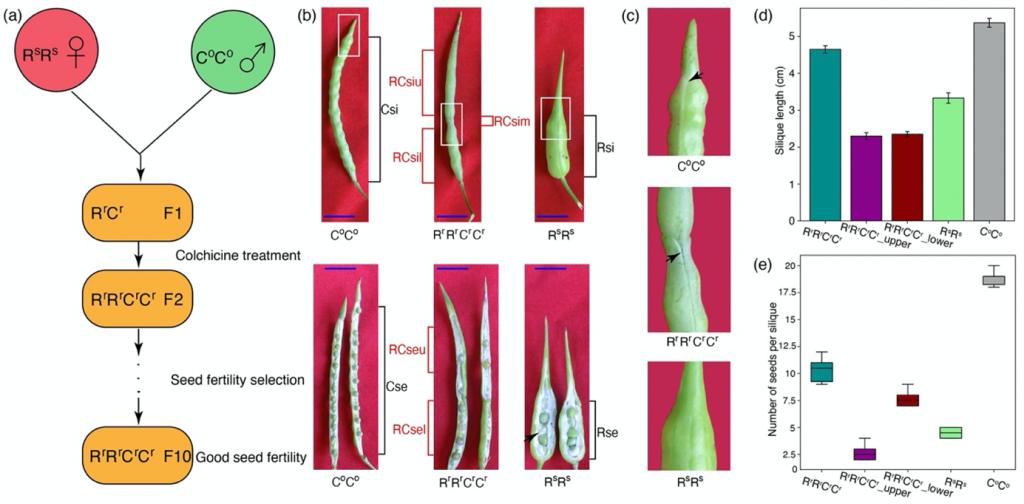Distant hybridization is one of the main ways of germplasm resource innovation. Previously, after ten successive generations of selection, Prof. Wu's team obtained the genetically stable inter-generic hybrid Raphanobrassica (2n=4x=36) by the hybridization of radish (Raphanus sativus, 2n=2x=18) and cabbage (Brassica oleracea var. alboglabra, 2n=2x=18). The hybrid has excellent agronomic traits such as resistance to clubroot disease and beet cyst nematode effectiveness, and has important breeding application prospects. Morphological observations found that the siliques of the hybrid exhibit a very interesting phenotype, which can be clearly divided into two parts. The upper part has similar traits as those of the radish, and the lower part is similar to the cabbage silique. The study of gene expression patterns of this phenomenon is of great significance for revealing the evolution of polyploidy hybrids.
On December 1, the research group of Prof. Maoteng Li from the College of Life Science and Technology of Huazhong University of Science and Technology published an online paper entitled “Genome-wide unbalanced expression bias and expression level dominance toward Brassica oleracea in artificially synthesized intergeneric hybrids of Raphanobrassica” in Horticulture Research, a journal ranking #1 in the field of horticulture. This article analyzed the gene expression patterns of Raphanobrassica and its parent radish and cabbage in siliques 35 days after flowering. The results of the study showed that among the analyzed genes, about 40% of the gene expression levels in the upper, middle, lower part of Raphanobrassica pods and seeds showed expression level dominance toward cabbage. At the same time, it was also found that the expression levels of homoeologs in the hybrid generally biased to cabbage, with different preferences in different parts. Further analysis have shown that the expression levels of a large number of genes in Raphanobrassica siliques were down-regulated compared with their parents, i.e., transcriptome shock has occurred.
The corresponding author of this paper is Professor Maoteng Li, College of Life Science and Technology, Huazhong University of Science and Technology. Associate Professor Libin Zhang and PhD student Jianjie He are the co-first authors. Master student Hongsheng He and Professor Jiangsheng Wu of Huazhong Agricultural University also participated in the work of this article. This research was supported by the National Key Research and Development Program (2017YFD0101701) and the National Natural Science Foundation of China (31540083).
